Learning That Sticks: The Power of Post-its in the ELT Classroom

August 27, 2025
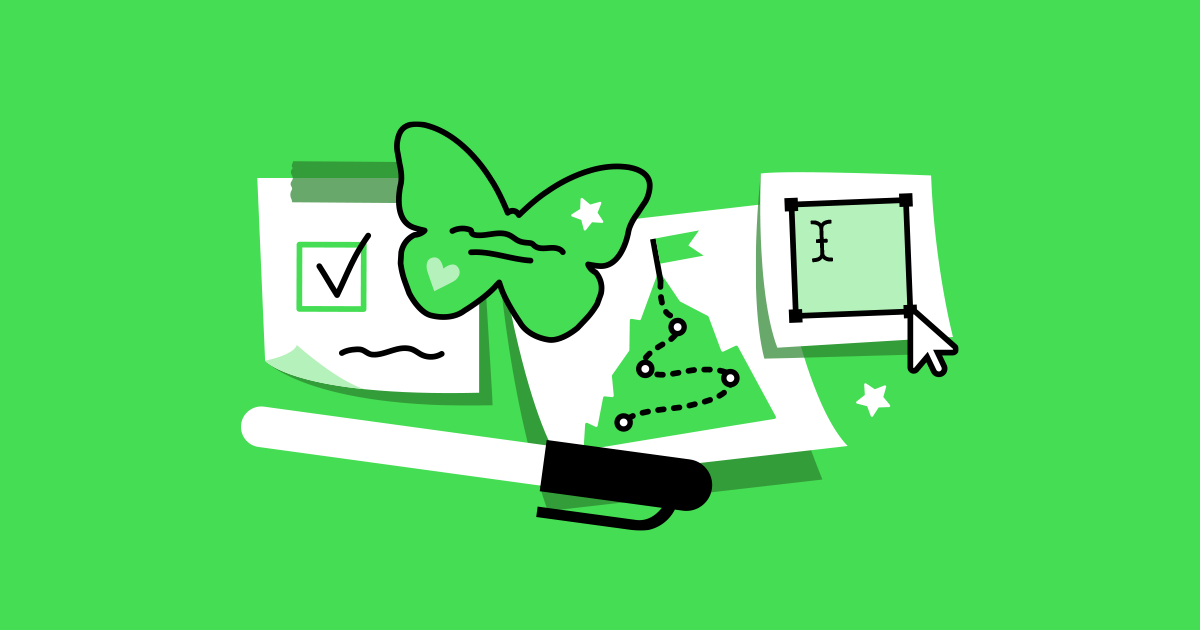
Share this post
What's not to love about post-it notes? These delightfully colorful bits of paper come in all sorts of shapes and sizes. They can instantly make the classroom a more joyful, interactive, communicative, and multisensory place.
In this blog, I share some of my favorite post-it note activities. They are perfect for adapting and using for your own needs and learning context, so prepare to get inspired and creative!
If you are teaching online, many digital whiteboards such as Canva, Zoom, Miro, and Mural have sticky notes, so you can still use these ideas in class.
Processes & problem-solving
Sticky notes are incredibly effective at helping people think and solve problems. In Tom Wujec's TED Talk, "Got a Wicked Problem? First Tell Me How You Make Toast," Tom explains some crucial steps and tips for simplifying processes.
Using post-its forces people to simplify content and keep ideas focused. It also allows them to move ideas around, trash nonessential ideas, and add new ones. Collaboratively, this can lead to creative solutions for large-scale problems.
In class, have students work in groups. Give them some post-its and have them work together to describe a process.
For example: how to make toast, a cup of tea, or a sandwich, or something more complex, like the water cycle. Then have them write the steps of the process or describe them in a presntation format.
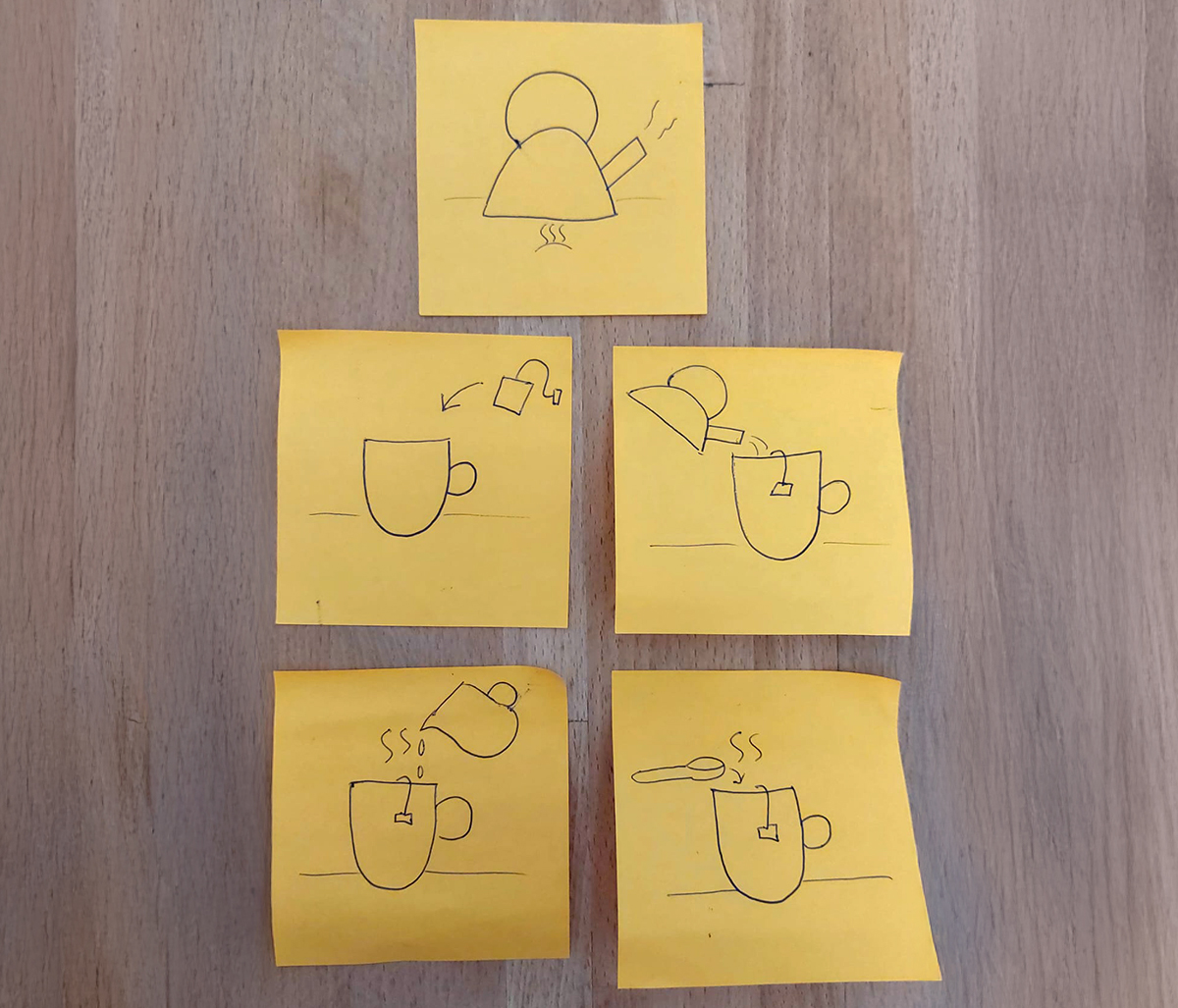
Brainstorming & ideation
Sticky notes are amazing for getting ideas out of the brain and onto paper. They are small enough to keep ideas short and simple, and flexible enough to move around or bin if and when necessary.
One classroom idea is to have students write suggestions for things they want to learn on post-its (one idea per post-it). They can then add them to the whiteboard, group similar ideas, and discuss which ideas they like the most. This is a great way to make lessons as learner-centered as possible.
Forehead stickies game
This game is a classic. It's a great way to practice asking and answering closed questions and various vocabulary items.
Start by giving students a post-it note. Have them write a vocabulary item or a famous person on it. Then mix up the post-its. Invite one student to the front of the class and have them put one of the sticky notes on their forehead. Make sure they don't see what is on it. Then have them ask questions with yes/no answers. The aim is to guess what is on their post-it with as few clues as possible.
For example:
- Do I need to go to university for this job? > Yes
- Do I work in an office? > No
- Do I go home every day after work? > No
- Do I sleep at work? > Yes
- Am I an astronaut? > Yes
Once the first student has guessed correctly, move on to the next learner so that all students have a turn.
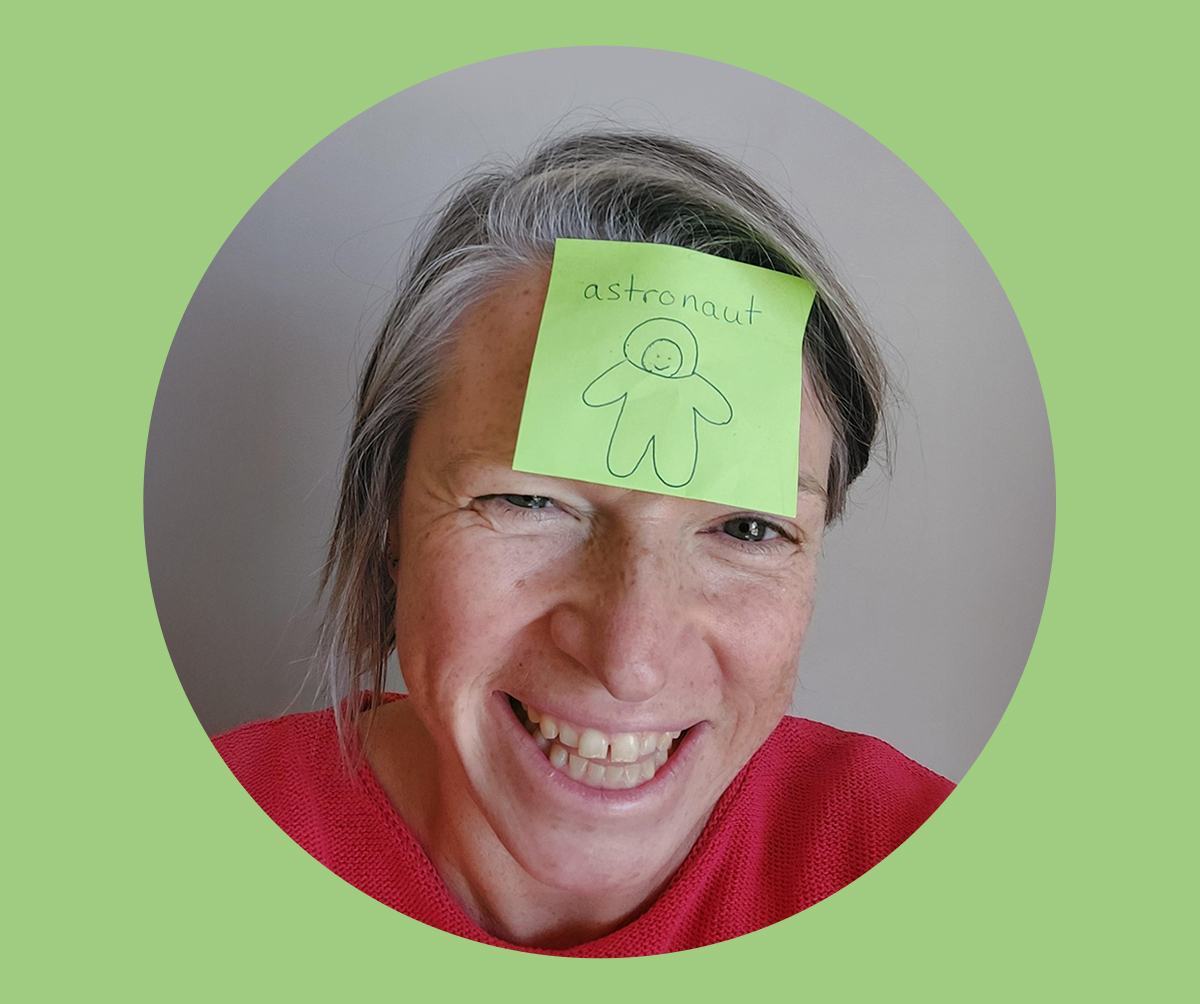
Container activities
In graphic facilitation, a "container" is a large-scale doodle or icon that creates a space to think or add ideas. These can be drawn large scale on a flipchart or whiteboard, or form part of a printable worksheet or graphic organizer.
Container activities are brilliant as they allow students to think and add their ideas anonymously. They also allow learners to move around the classroom and discuss different topics.
In this example, I wanted to help learners think about their study habits and preferences. I drew containers to represent different ways that learners might study. For example:
- videos
- podcasts
- online
- books
- radio
- apps
Students then wrote examples of books they liked, apps they love, videos they recommend, etc., on their sticky notes. They then added them on the whiteboard and discussed the best ways to learn.
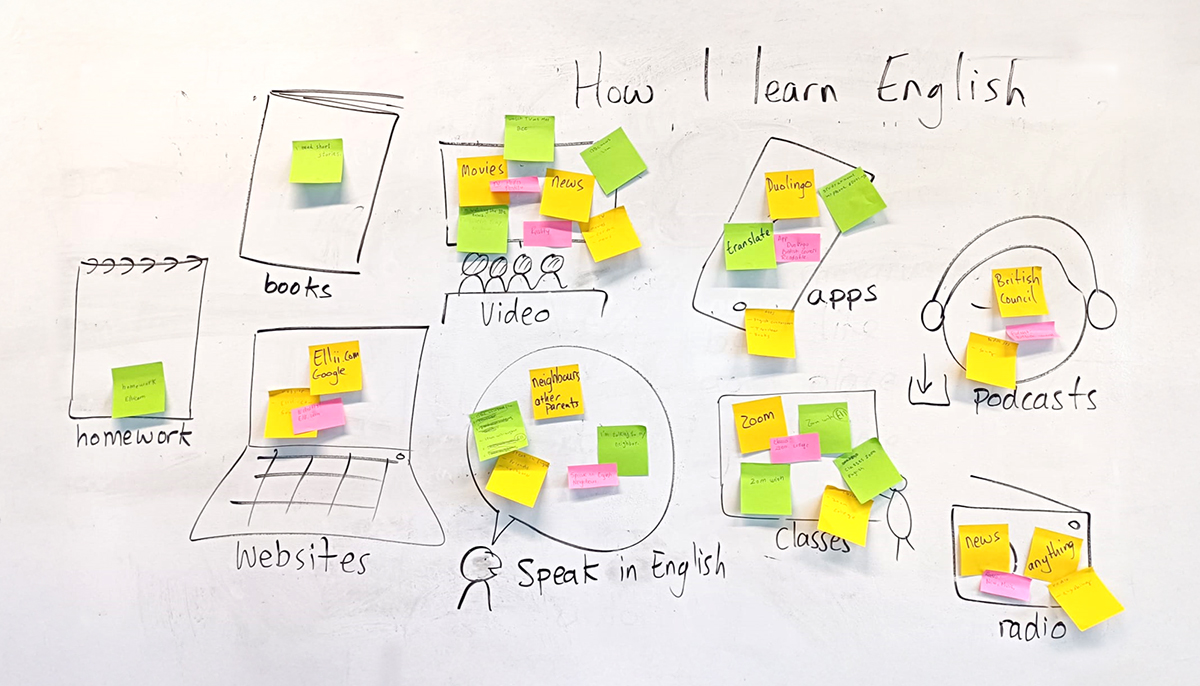
You can find more container activity ideas and other examples in these blog posts:
- How to Simplify Complex Tasks with Visual Prompts
- Visual Templates for Engaging Environmental Discussions
Post-it note prompts
Students often need prompts to focus their ideas, discussions, and reflections. In this LinkedIn post, Jane Carvell uses post-its to prompt her learners to think about their key moments from recent experiences. Often when we ask or get asked "What have you been up to?," our minds go blank, but this activity supports a deeper level of conversation.
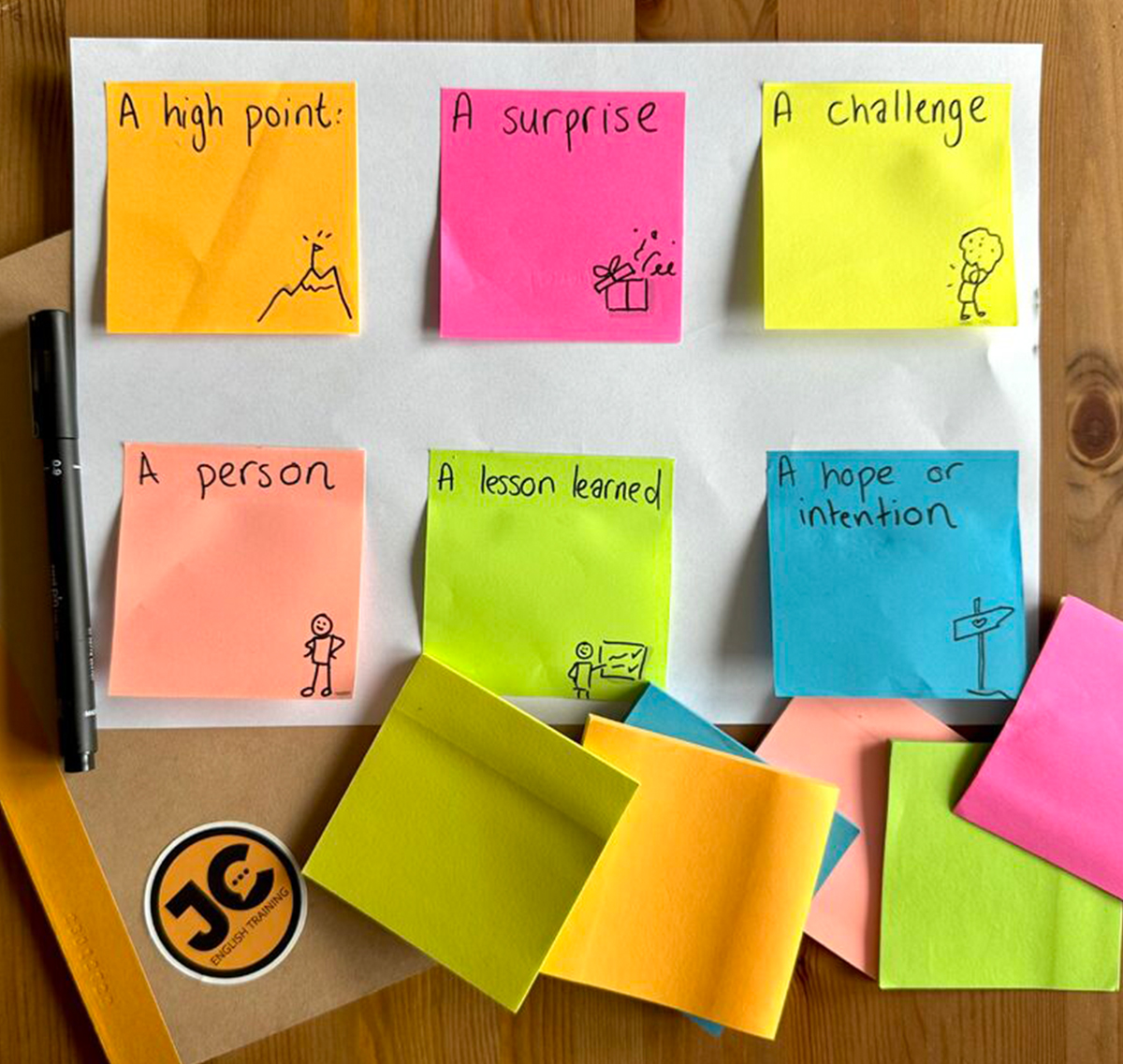
Visual storytelling (aka "stickytelling")
Another benefit of sticky notes is that they immediately make information sharing less intimidating. Give a learner a blank piece of 8x11 paper and ask them to write or draw on it, and they may feel overwhelmed by the size they have to fill. Give someone a teeny-tiny post-it note and they'll instantly relax, knowing that whatever they add will be viewed as a draft attempt.
That's one of the reasons why post-its are so fun when it comes to storytelling. Here are a couple of ideas:
- Give students a sticky note. Have them doodle something or write a word on it. Mix up the stickies. Pull a sticky out of the pile. Have one student start the story based on what is on that sticky note. Ask the next student to choose the next sticky and continue the story. Continue until the whole class has created a story.
- Have students work in groups. Give them a set of sticky notes. Ask them to use the stickies to tell a story. Have them draw one icon or add a prompt word to each sticky. This could be as simple as describing their day so far, their daily routine, or their English language learning story so far. You could also have them retell some of the stories from Ellii's collection:
Here are some more storytelling themed posts:
Visual check-ins
Sticky notes are blissfully color-coded. To check in with learners to see how they are doing, give each one a pink, orange, and green sticky (or one per table). If students are feeling confident, have them display the green sticky. If they are feeling a little confused, have them display the orange sticky. If they really need your attention and support, have them display the pink sticky.
Post-it progression walls
Stickies also work well to show learner progress. At the beginning of a course, create a poster or wall display outlining the course content. For an added element of fun, you could make this into a journey map, stairs, stepping stones, or footprints. Have students create an avatar for themselves on a post-it and then move it at the end of each lesson or as they complete different the sections of coursework. Different shapes of post-its, such as butterflies, work really well for this, so feel free to go wild in your local stationery store.
Are you a fan of the humble post-it note? How have you used them in class? Have you tried any of these ideas? We'd love to hear your own experiences and top tips! Share your ideas in the comments.
Here are some other blog posts that you might be interested in:
- The Multimodal, Multisensory, Multicultural Power of Multiliteracy Learning
- Getting to Know Your Learners: Supercharging Learner-Centered Teaching
Comments
There are no comments on this post. Start the conversation!